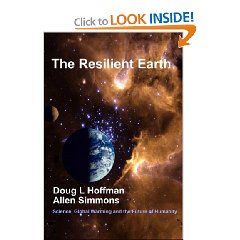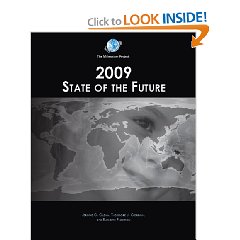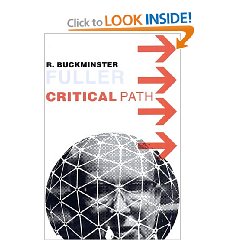 Top-Notch Contribution, Incomplete but Very Much on Target,June 16, 2009
Top-Notch Contribution, Incomplete but Very Much on Target,June 16, 2009
Jack M. Hollander
AMAZON has managed to eradicate virtually all of the voters for non-fiction by labeling them fans. This is so dumb I just shake my head. To find my buried reviews that summarize books in a useful way, use the online free bibliography at oss.net/PIG; just add the three w's.
I got this book at the same time as Eco-Imperialism: Green Power, Black Death and consider both to be very worthwhile. As much as I and others mocked The Skeptical Environmentalist: Measuring the Real State of the World for its data manipulation and unsupported conclusions, I have to say that the push-back has been important, and I am particularly impressed by the devastating critique in the other book (Eco-Imperialism) on the lack of integrity among the non-profits who strive to force their agenda on the public without ethical substance.
The author focuses on challenging the assumption that affluence in the Third World will destroy the environment, and I have a note, “a thoughtful, remarkable review.”
As with other books, DDT surfaces here as the poster issue for claims that it is bad for the environment versus claims that it is good for humanity.
I respect the core point on page 10: “The real enemies of environmental progress are poverty and tyranny, not technology and global markets.” The author was ahead of his time, publishing in 2003, in 2004 the High Level Panel agreed with him and made poverty THE #1 threat to humanity above infectious disease, environmental degradation, and seven other threats. See A More Secure World: Our Shared Responsibility–Report of the Secretary-General's High-level Panel on Threats, Challenges and Change.
There are some great turns of phrase. The author characterizes the current debate as “grains of truth embedded in a sea of exaggeration.”
I am totally impressed by the author's emphasis that for the five billion poor, the crisis is local and the threats within the threat of poverty are:
01 Hunger
02 Dirty water
03 Disease
04 Scarcity
05 Lack of Education
06 Social inequality, especially of women.
On #5, the UN IT folks just announced the opening of a free online university, which is a great start, now we just need for South Africa, China, India, and perhaps Chile to start call centers that offer all the poor education one cell call at a time. [And today Nokia announced a cell phone powered by ambient electro-magnetic waves in the atmosphere, i.e. it can continue running without having to be charged, a huge essential for the poorest of the poor).
On #6 I share the author's view that educating women and empowering women is a major aspect of assuring our future. I was much impressed by A Half Penny on the Federal Dollar: The Future of Development Aid and his emphasis on how the best return on investment for any aid dollar is from the education of women.
The author focuses on technological innovation (e.g. the Nordic hand-held device without energy needs that can filter feces water to produce clean drinkable water) and economic efficiency–this book does not mention corruption or “true costs” but the author is on track.
He is optimistic because of what we know and despite what we do not know, and I also am sharing his optimism as I see books like Blessed Unrest: How the Largest Social Movement in History Is Restoring Grace, Justice, and Beauty to the World and Collective Intelligence: Creating a Prosperous World at Peace.
He briefly discusses how poverty should be freedom of choice not only in economic terms, but in relation to political and other domains, as espoused by (he quotes) Amartya Sen, Nobel Laureate.
He spends a lot of time arguing that population growth is not inevitable and is not the doomsday scenario, capping this with a quote from the UN that suggests that population growth will be static by 2100, accompanying this with a compelling graphic that shows that affluence is the best way to end unreasonable or out of control population growth.
In the food section he extols the benefits of biotechnology while ignoring the crimes against humanity, such as Monsanto selling seed that kills its offspring so that the seed has to be bought again.
From this book I draw out the urgency of ending the sequestration of technology such as is now prevalent among many patent systems that do not have a “use it or lose it” clause in their schema.
There are good discussions of the oceans as the vital commons of the future, of global warming (Al Gore is starting to take a lot of hits for being facile with the truth), on water (water wars, women and water management, underpricing of water negating its efficient use), and on renewable energy.
While the author credit innovation with bringing the price of renewable energy down to a tenth of what it was, his knowledge is a bit dated as presented in this book, and I would add that similar gains have been made with respect to the desalination and purification of water from the sea, down from $10 a cubic meter to under 50 cents a cubic meter.
Moore's Law is going to apply to environmentally-relevant technologies, in my view.
He provides a thoughtful conclusion and lists seven goals on page 194:
01 Freedom and democracy are core foundations for the eradication of poverty
02 Gender equality is essential (I would actually return to matriarchies)
03 The poor must receive the education and the tools (I add: free cell phones, education by the call as espoused by the Earth Intelligence Network)
04 New wealth must be created in sustainable equitable manner that lifts the poor.
05 Massive effort is needed to cut diseases in half
06 World economy must become truly global, instead of current predatory neo-colonialism
07 Foreign aid needs to be targeted at the poor (see my briefing at oss.net/HACK, add the w's).
See also:
The Fortune at the Bottom of the Pyramid: Eradicating Poverty Through Profits (Wharton School Publishing Paperbacks)
The Wealth of Networks: How Social Production Transforms Markets and Freedom
The New Craft of Intelligence: Personal, Public, & Political–Citizen's Action Handbook for Fighting Terrorism, Genocide, Disease, Toxic Bombs, & Corruption
Election 2008: Lipstick on the Pig (Substance of Governance; Legitimate Grievances; Candidates on the Issues; Balanced Budget 101; Call to Arms: Fund We Not Them; Annotated Bibliography)











